Where to Find Acrylic Pour Ideas and Inspiration?
Acrylic paint pouring is addicting. There just isn’t any other way to put it. We all get that urge periodically to cover our tables, gather our painting supplies, and do some serious pouring. What happens when you have everything laid out, but you’re mind goes blank on what you want to create? Everyone needs a little help finding ideas and inspiration, even acrylic pour artists.
There are so many things to inspire a painter including the great outdoors, fashion, other artists’ works, and social media. Paint pouring ideas can even come from mundane sources like the color of someone’s socks, or the color combination of products in a storefront. Almost anything can spark a creative thought to help guide a fluid pour.
Below we review some of the places where we have found acrylic paint pouring inspiration and ideas.
Finding Fluid Pour Inspiration on Social Media

The whole idea behind social media is people sharing things that they enjoy. Some of the most popular social networks in the world like Facebook, YouTube, and Pinterest are bursting with places to find inspiration.
Each service offering in the industry uses a slightly different place on how they connect users and content. When users like, follow, 1-up, and swipe other users or those users’ content, they begin to get matched with more and more users with similar likes and profiles.
Social media is a perfect platform for artists of any kind to share their work. With hundreds of millions of users across hundreds of social media services, there are thousands of opportunities to find inspiration and ideas for your fluid acrylic projects.
YouTube – A Feast for the Eyes
As the most popular video sharing network in the world, YouTube has approximately 1.3 BILLION users and almost 5 BILLION videos are watched on YouTube EVERY DAY.
Videos combine sight and sound as they transport the watcher to places and situations which many people would find it difficult to encounter in real life. There are literally millions of videos at your fingertips.
What better place to find inspiration for your next paint pour?
While every person is different in the way they discover and identify inspiration, we believe there are two main ways it happens with for artists.
- Imitation – You’ve heard the phrase “imitation is the best form of flattery?” Everyone wants to able to make art as beautiful as so-and-so or what’s-his-name. With acrylic paint pouring, no two pieces are ever going to be the same. Find an artist whose work you love and copy them. Use them as your muse and follow along with the ideas. Remember, they did put it on YouTube for you to watch!
Some of our current favorite artists to watch on YouTube are Elyse Fournier, Gina DeLuca, and MelyD.artist.
- Random – Just watch random videos you are interested in. They can be anything: survival, sports, comics, unwrapping, anything! While watching, keep your eyes on the lookout for scenes that jump out at you. Anything that is visually memorable. When you find one of these moments, pause the video and figure out why it caught your eye. Now try and recreate that same look with your paint pour. We guarantee you’ll be surprised by some of the results you get.
Pinterest – A Visual Search Engine
Pinterest is currently one of our favorite places to look for ideas and inspiration for fluid acrylic paint pours. There are so many people out there sharing things that they love.
Pinterest is less of a social media platform than a visual
search engine. The idea with Pinterest
is to create “boards” as they call them.
Then as you see things you want to save for later, you “pin” those
pictures to your boards.
Pinning pictures to your board does two things.
First, it keeps a record of things that you want to save. These are categorized based on which board
you pinned them to and when you pinned them.
The second benefit is the most important when it comes to inspiration. Pinterest learns what you like based on the things that you have pinned. From then on, you will start seeing similar things on your feed that you have pinned to your own boards.
This means that if you search for and pin a few dozen acrylic paint pouring projects from other people, you will start to get those types of pictures in your home page feed.
Now you can scroll through your home page and find even more pictures to help inspire you for your next paint pour masterpiece.
Instagram – Use Ideas from Others
Instagram is very similar to Pinterest in that it is a social media platform where you can share pictures. Where Instagram differs from Pinterest is in how you connect with other people.
Rather than pinning pictures, you actually “friend” other users on this platform. This allows you to see when those people post new pictures.
In addition, you can comment on their pictures and interact with other Instagram users. While searching for inspiration and ideas doesn’t necessarily require user comment, sometimes those comments give direction on how to do things-or why the artist did things that way, which can spark some creative ideas also.
Instagram also uses the pictures you have “liked” or “hearted” to decide what to show in the search (magnifying glass) feed. Once you have followed a few acrylic pour artists and you have hearted a few pictures, you will start seeing other artists works in your feed.
Some of our favorite Instagram accounts we follow currently are dirtypourcreations and acrylicpourpros although there are hundreds, if not thousands, of great acrylic paint pour Instagram accounts out there .
Pictures – Find Acrylic Pour Ideas Everywhere
Pictures or an amazing place can inspire your next fluid pour project. As we’ve seen with Instagram and Pinterest, a visual cue is an effective way to find ideas for a paint pour.
With most non-acrylic pour pictures, you are looking for color combinations that make you think “that would be an interesting pour”.
You can find inspiration in pictures of wildlife, news headlines, personal photos, billboards, or even just in the things you see throughout your day. Any of these scenes could spark an idea for a paint pour project.
Let the Great Outdoors be Your Inspiration
The great outdoors is one of our favorite places to find inspiration for our fluid pours. There are so many different types of landscapes and scenery to emulate in an acrylic pour.
Desert, forest, plains, mountains, and everything in between can provide color combinations that can be used in an acrylic pour.
Even pictures of individual flowers, animals, insects, trees, or other flora and fauna have enough details to give an impression of colors and how they synthesize together.
Seek Inspiration in Fashion and Apparel
Another great place to find inspiration for your next fluid acrylic pour is in the fashion industry. Most outfits on models in the fashion industry are painstakingly analyzed to create the perfect ensemble.
Find ideas from more mainstream fashion locals like major runway shows or from the apparel of actors and models.
Famous Art Works
There is a reason that famous artists are famous. They have created artwork that resonates with people. These pieces inspire emotion which makes them notable and praiseworthy.
Why not take a lesson directly from the masters to give you ideas for your acrylic pouring? Use the colors and ratios from a Van Gogh painting, or the crazy color combinations from an Andy Warhol piece.
There are many places online to view pictures of famous artworks and galleries of art from all different genres.
Take Advantage of the Color Wheel
The color wheel is an artist’s best friend. There are hundreds of thousands of color combinations to be found using the basic principles of the color wheel. What better place to find the best colors for an acrylic pour?
Color theory is an extensive topic that we don’t believe needs to be covered here. We recommend checking out resources like this one from LifeHacker if you need an introduction or a refresher on the color wheel, color schemes, tones, hues, tints, and shades.
One word of advice we do want to give when it comes to the color wheel is that you should always experiment regardless of what the color wheel says. Sometimes a little deviation from the accepted norm or color combination is just what a piece needs to stand out from the crowd.
Use A Color Palette Generator for Your Next Paint Pouring Project

Sometimes while looking for inspiration, you only find one or two colors that you want to try. While two colors are plenty to create a beautiful fluid acrylic painting, you may want a few more to give a little more depth to the piece.
A color palette generator is a great place to get your creative juices flowing. Websites like Coolors.co or Canva.com allow you to take the colors you already have and help you find other colors that might go well with them.
Canva also has a notable feature where you can upload a photo, and it will provide you with a color palette based on that photo.
Keep a List of Ideas and Inspiration
An idea for a fluid pour can come from the most mundane places; you just need a place to record it for future use.
If you jot down these ideas as you come across them, you’ll always have a place to refer back to when you need a little extra help choosing your colors and the different techniques that you may want to use.

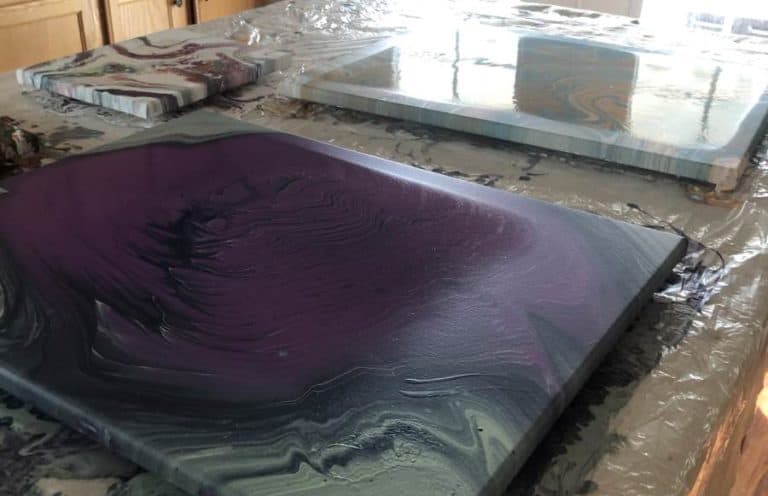
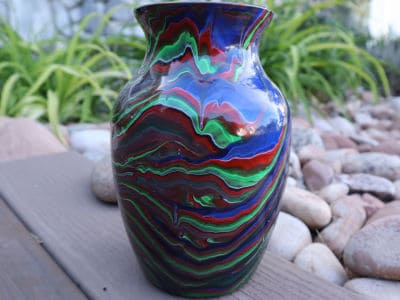
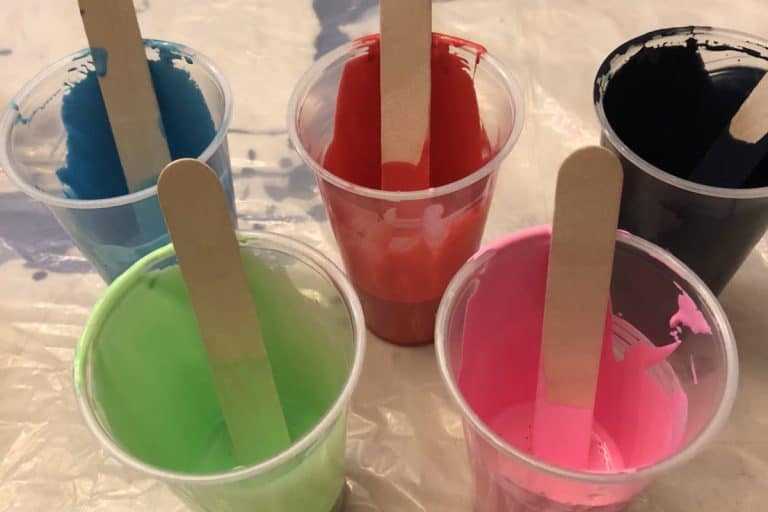
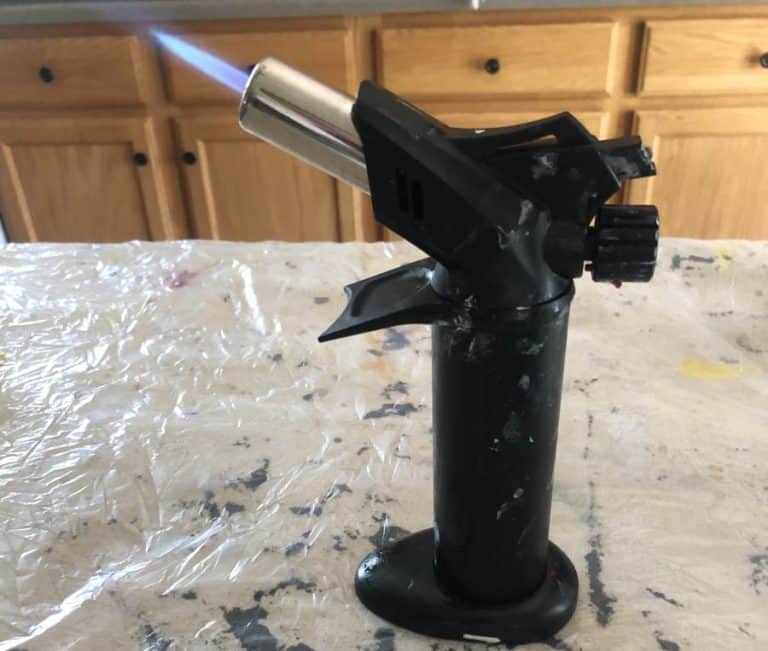

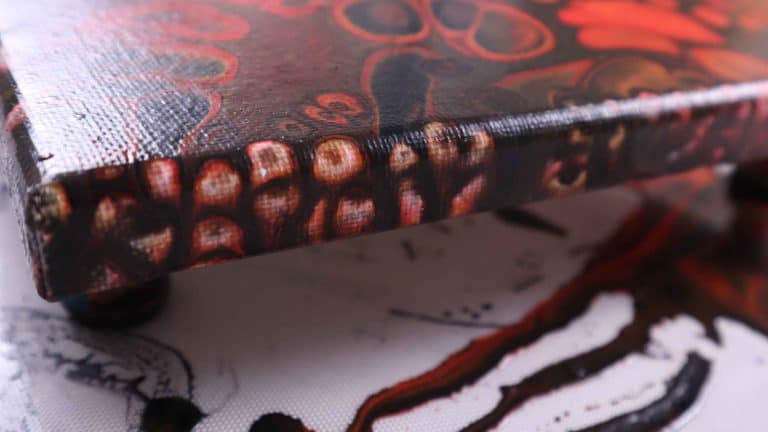
You are such a great help to me, now I understand paint pouring. Now I can start without being so hesitant .thank you so much for your help. Take care, happy pouring and keep safe
Excellent news Yvonne. Let me know how your first pours go!
Like you I come from a technical back round and always wished I could create “COLOR” . After finding Pour art on You tube I realized I already had a jump start due to my wife no longer able to use her collection of supplies. Question? The pillow used in many pours always seem to use a lot of titanium white, this seems to to in crease the cost as this was one of the paints my wife had very little of and is hard to find in quantity reasonably. Alternatives available?
Buy in bulk online is the best solution for that. I get the half gallon containers usually for that and black from Amsterdam, Liquitex, or one of the other nicer brands. You don’t have to have a base coat for most paintins though. They do chnage how the paint moves but the only technique that really needs it is the open cup.